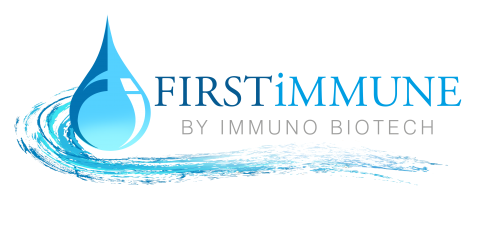The problem with the test is you need to find a local laboratory who will withdraw your blood into a syringe, spin it down in a centrifuge to extract the yellow serum, and pack the serum to keep it cool for dispatch.
The fastest (2 weeks) is Redlabs in Belgium: +32-(0)2-481-5310 and +32-(0)2-481-5323
http://www.redlabs.be/documents/NAGALASE%20-%2001.01.2014.pdf
If you use ELN in Holland and the USA, its been taking 5 weeks to get results back, so its only useful after you’ve been on GcMAF for 8 weeks and compare the first and second results. And by then you are 8+5=13 weeks down the track. In autism your child should have responded, and obviously so, before then. However, in long term diseases like stage 4 cancer, nagalase at 13 weeks may be the first definite indicator you get.
So if you decide to do nagalase, we recommend taking the Nagalase blood sample just before commencing GcMAF (don’t wait for the results) and every 8 weeks throughout treatment. A drop in Nagalase levels shows you are a responder, and that the grip of the disease is being broken. The cost of a Nagalase blood test is 50 euros from European Laboratory of Nutrients (ELN) plus any additional costs from your Doctor or Clinic to extract and prepare the blood sample. A healthy level is below 0.65 nmol/min/mg
Do not believe ELN when they say a healthy level is 0.95. If you stop GcMAF at a nagalase level of below 0.95, the nagalase will take over again within a few weeks, your own GcMAF will never recover, and your immune system will collapse again. The proper level is below 0.65.
Please click here to download an ELN blood test request form and here for more information concerning Nagalase
ELN’s website is http://www.europeanlaboratory.nl/ and their New Jersey USA address is also at the top of their homepage.
The test measures the activity of alpha-N-acetylgalactosaminidase (nagalase) in blood. Nagalase is an extracellular matrix-degrading enzyme that is (increased) secreted by cancerous cells in the process of tumour invasion. It also is an intrisic component of envelope protein of various virions, such as HIV and the influenza virus. It is secreted from virus-infected cells..1,3,4
Nagalase was though to deglycosylate the vitamin D3-binding protein DBP (in humans better known as Gc-protein) but it is actually more complicated than that. Gc-protein is the precursor for the major macrophage-activating factor (MAF). Gc-protein carries one trisaccharide consisting of N-acetylgalactosamine with dibranched galactose and sialic acid termini. By the deglycosylation the (complete) trisaccharide is removed from the Gc-protein. The glycosylated Gc-protein cannot be converted to MAF anymore.
Normally MAF is produced from Gc-protein by sequential removal of the galactose and sialic acid termini from this protein by respectively beta-galactosidase of inflammation- primed B lymphocytes and sialidase of T lymphocytes, with N-acetylgalactosamine as the remaining sugar. Macrophage-activation for phagocytosis and antigen presentation is the first step in the immune development cascade. Lost precursor activity leads to immunosuppression.
Increased activity of nagalase has been detected in the blood of patients with a wide variety of cancers, like cancer of the prostate, breast, colon, lung, oesophagus, stomach, liver, pancreas, kidney, bladder, testis, uterus and ovary, mesothelioma, melanoma, fibrosarcoma, glioblastoma, neuroblastoma and various leukeamias.1,3,4 For various types of tumors various levels of nagalase activity were found.7 It seems likely that secretory capacity of individual tumor tissue varies among tumor types depending upon tumor size, staging, and the degree of malignancy or invasiveness.7 Increased nagalase activity has not been detected in the blood of healthy humans.1
It has been established that the nagalase activity is directly proportional to viable tumour burden..1,2 Studies correlating nagalse levels with tumour burden suggest that the measurement of this enzyme can diagnose the presence of cancerous lesions below levels detectable by other diagnostic means.1 In research a day after surgical removal of primary tumours from cancer patients nagalase activity suddenly decreased to near the tumour-free control level, suggesting that the half-life value of nagalse is less than 24 hous.1,6 The short half-life of nagalase is valuable for prognosis of the disease during various therapies.1,5
Nagalase is the intrinsic component of the envelope protein gp120 of HIV-virions and of the envelope protein hemagglutinin (HA) of influenza virus. Nagalase activity is the sum of enzyme activities carried by both HIV virions and unassembled envelope proteins.4
Note: The values may be affected by drug used in the five days preceding the sampling. Drug use must be indicated on the questionnaire submitted with the requisition form.
- M Korbelik, VR Naraparaju and N Yamamoto.The value of serum alfa-N-acetylgalactosaminidase measurement for the assessment of tumour response to radio- and photodynamic therapy. British Joumal of Cancer (1998) 77(6), 1009-1014
- Reddi AL et al. Serum alpha-N-acetylgalactosaminidase is associated with diagnosis/prognosis of patients with squamous cell carcinoma of the uterine cervix. Cancer Lett. 2000 Sep 29;158(1):61-4.
- Yamamoto N and Urade M. Pathogenic significance of alpha-N-acetylgalactosaminidase activity found in the hemagglutinin of influenza virus..Microbes Infect 2005 Apr;7(4):674-81. Epub 2005 Mar 22.
- Yamamoto N. Pathogenic significance of alpha-N-acetylgalactosaminidase activity found in the envelope glycoprotein gp160 of human immunodeficiency virus Type 1. AIDS Res Hum Retroviruses. 2006 Mar;22(3):262-71.
- Yamamoto N. Immunotherpy for prostate cancer with GC Protein-derived macrophage-activating factor, GcMAF. Translational Oncology. Vol 1, no 2 june 2008, [pp 65-72.
- Yamamoto N et al. Therapeutic efficacy of vitamin D3 binding protein derived macrophage activating factor for prostate, breast and colon cancers. Cancer Res. Proc. 38; 31 (1997)
- Yamamoto N et al. Deglycosylation of serum vitamin D3-binding protein leads to immunosuppression in Cancer Patients. Cancer Research 56 : 2827-2831, june 15, 1996.

